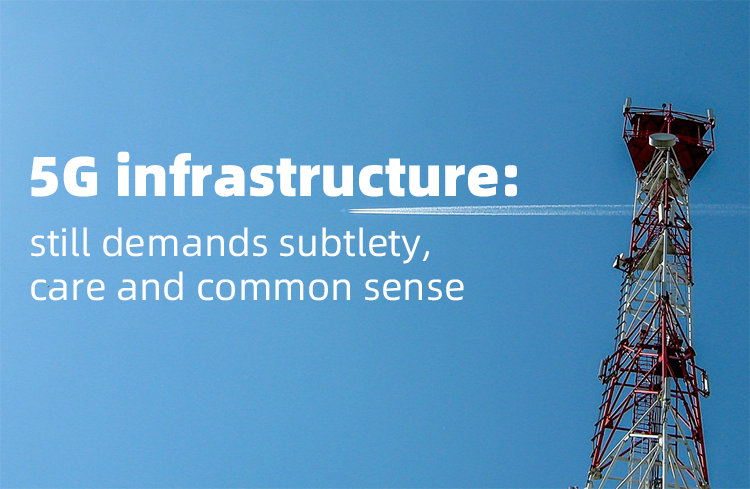
It's been almost six years since 5G technology arrived in the US, and the radios necessary to broadcast the technology remain a hot-button issue.
The latest "not in my back yard" (NIMBY) dustup started last month in Wyandotte, Michigan when, according to local news reports, T-Mobile obtained the rights to install 5G antennas atop the smokestack of Washington Elementary, near the school's playground.
Why a school has a smokestack, I don't know.
Regardless, a group of parents recently began protesting the 5G installation citing potential health concerns, even though the school inked its initial deal with T-Mobile in 2018 after a legal review and a public meeting.
T-Mobile has already installed the new 5G antennas on the smokestack – likely as a part of its broader 2.5GHz network upgrade effort – but it hasn't yet activated them. Pictures of the installation from local news outlets show that the 5G site does loom over the school's playground.
There have already been several contentious school board meetings on the topic, with T-Mobile officials leaving early during one and guards helping to disperse the crowd during another. The latest: The school's superintendent quit because of the protests.
T-Mobile officials declined to comment to Light Reading on the company's Washington Elementary installation.
Cents and sense
It's easy for people working in the wireless industry to scoff at the fears driving the parents of Washington Elementary students. But they're just trying to protect their kids from a seemingly endless barrage of complex issues, whether it's school shootings, social media, online learning, gender identity… the list goes on.
Further, based on collective learnings from the COVID-19 pandemic, it's not clear whether reason and logic can prevail in this situation. A Michigan TV news channel quoted "scientist and Doctor" Paul Héroux, of McGill College, as saying that cell equipment is a health danger. He also said evidence to the contrary is "a simple and blatant lie."
The debate over cellular communications and its possible effects on humans will continue. Vox published a relatively comprehensive look at the research surrounding the issue in 2018. A year later, the director of the Food and Drug Administration's Center for Devices and Radiological Health told the FCC that 5G is safe.
On the other hand, at several 5G testing facilities I've visited, researchers are very, very careful not to get near active, full-power transmitters because "you'll get fried." But they all also use cellphones every day, just like the rest of us. The trick, they've told me, is to avoid climbing cell towers and standing in front of the transmitters on those towers.
In my everyday life, I've found that relatively easy to do.
Hitting the bull's eye
NIMBY-ism is the real issue at play in Wyandotte. 5G phones are fine, but the sites required to power those phones probably shouldn't be too easy to spot.
Part of the problem is 5G itself. Unlike FM radio, which works across vast geographic areas, midband and highband 5G sometimes needs transmitters located much, much closer to users. Already some federal and state officials have worked to reduce the red tape around those kinds of sites.
But every once and a while, a group of concerned parents, neighbors or residents will band together to challenge a 5G installation they find particularly onerous.
These kinds of NIMBY dustups undoubtedly arrive like headaches to the wireless engineers charged with deploying new 5G spectrum bands as fast as possible. But they're probably perfectly understandable to anyone from East Palestine, Ohio, or Flint, Michigan.
Broadly, all this means that 5G providers need to take care, tread lightly and be respectful of everyone's backyard. That might mean slow-walking an installation to quell residents' concerns. Or it could mean using concealment technology – and not necessarily those obviously fake pine trees.
And in some cases, it might mean skipping the playground installation and finding a different spot instead.
Source: https://www.lightreading.com/5g-and-beyond/5g-infrastructure-still-demands-subtlety-care-and-common-sense/a/d-id/784288

